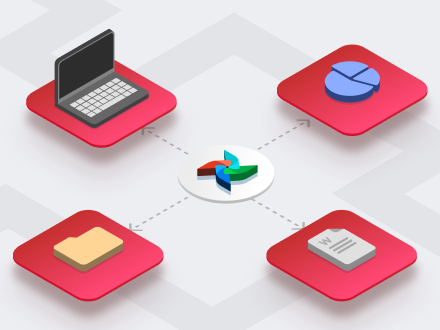Principales casos de uso de la analítica de datos para riesgos y seguros
He aquí cómo se aplican los datos en toda la cadena de valor de los seguros, a diario, sin hacer ruido y con graves repercusiones.
Evaluación de riesgos y fijación de precios
Olvídese de las grandes categorías. Las aseguradoras actuales elaboran perfiles de riesgo dinámicos utilizando datos históricos, comportamientos en tiempo real e incluso señales no convencionales como la actividad en las redes sociales, los hábitos de compra o las imágenes por satélite para la cobertura de bienes. ¿Cuál es el resultado? Precios precisos que reflejan el riesgo real.
Detección de fraudes
El análisis moderno del fraude va más allá de los sistemas basados en reglas. Combina datos estructurados (historial de reclamaciones, detalles de proveedores) con entradas no estructuradas (narraciones de reclamaciones, patrones de comportamiento) para detectar anomalías en una fase temprana. La minería de textos, la detección de anomalías y el cruce de datos de terceros permiten detectar el fraude antes de que acabe con sus reservas.
Telemática en los seguros de automóviles
Los datos en tiempo real de dispositivos GPS y sensores ayudan a las aseguradoras de automóviles a entender cómo se conduce un vehículo, no sólo quién lo conduce. Esto incluye la aceleración, el frenado, el kilometraje e incluso el uso del teléfono al volante. ¿El resultado? Primas personalizadas, resolución de siniestros más rápida y menos litigios.
Segmentación de clientes
La analítica permite a las aseguradoras ir más allá de los datos demográficos y segmentar a los clientes por rasgos de comportamiento, etapas de la vida, hábitos digitales y otros. Esto significa que el marketing, el diseño de productos y la asistencia pueden ser personalizados, no sólo específicos. Es la diferencia entre ofrecer una póliza y ofrecer relevancia.
Automatización de la tramitación de siniestros
La automatización se encarga ahora de la mayor parte del procesamiento inicial de siniestros: validación de datos, comprobación de incoherencias y cálculo de liquidaciones. Los análisis mejoran la precisión y señalan los siniestros sospechosos para su posterior revisión, liberando a los peritos humanos para los casos extremos.
Mejora de la suscripción
Atrás quedaron los días en que la suscripción se basaba únicamente en la edad y en tablas estáticas. Los suscriptores de hoy en día introducen diversos conjuntos de datos en los modelos AI -desde HCE hasta comportamiento crediticio o datos de conducción- generando puntuaciones de riesgo que se actualizan continuamente. Es dinámico, no fijo. Y refleja mucho mejor el riesgo del mundo real.
Personalización de la experiencia del cliente
Los asegurados ya no son tratados como archivos. Gracias a los análisis, las aseguradoras pueden identificar necesidades de forma proactiva, anticiparse a las bajas y ofrecer valor en el momento adecuado, ya sea un recordatorio de cobertura, una mejora del producto o un descuento basado en el estilo de vida. Piense en CX con contexto.
Análisis predictivo
Desde la identificación de clientes propensos a presentar siniestros de alto coste hasta la detección de los que están al borde de la caducidad, los modelos predictivos permiten a las aseguradoras ir un paso por delante. Esta postura proactiva mejora la retención, asigna los recursos de forma más eficaz y ayuda a construir relaciones a largo plazo.
Modelización de catástrofes
Las catástrofes naturales siempre han sido impredecibles, pero su frecuencia e intensidad van en aumento. Por eso la analítica combina ahora datos climáticos en tiempo real, datos de satélite y mapas de desarrollo urbano para modelizar el riesgo de catástrofe en lugares concretos antes de que ocurra. Es el futuro de la suscripción por volatilidad climática.
Programas de salud y bienestar
Las aseguradoras colaboran ahora con las empresas y los asegurados para mejorar los resultados sanitarios. Los análisis de los wearables, los controles de bienestar y el historial de siniestros permiten la atención preventiva, la estratificación del riesgo y opciones de pólizas más flexibles basadas en perfiles de salud.
Optimización de la liquidación de siniestros
Los sistemas de análisis de siniestros pueden predecir si una reclamación es válida, cuánto tardará en resolverse y qué probabilidades hay de que se agrave. Esto ayuda a las aseguradoras a priorizar recursos, evitar litigios y reducir los plazos de pago y los gastos generales.
Ciberseguridad y riesgo digital
Las aseguradoras suscriben ahora el riesgo cibernético utilizando análisis que tienen en cuenta la infraestructura informática, las amenazas del sector y los indicadores de riesgo de comportamiento. Por otro lado, utilizan las mismas herramientas para proteger sus propias operaciones: detectar patrones de acceso sospechosos, uso indebido de credenciales o anomalías en los datos de uso.
Prevención del fraude en la sanidad
El fraude sanitario es complejo y a menudo colusorio. La analítica detecta patrones que ningún sistema manual podría detectar (facturación duplicada, reclamaciones fantasma, volúmenes de servicios inflados o diagnósticos desajustados) e inicia automáticamente flujos de trabajo de investigación.
Valoración de la propiedad
Los modelos de datos incorporan ahora información sobre la ubicación, los materiales de construcción, la frecuencia de los siniestros e incluso la evolución de las infraestructuras locales para ofrecer una valoración de la propiedad en tiempo real. Se acabaron las tasaciones obsoletas y los riesgos de infraseguro o sobreseguro.
Desarrollo de productos
Por fin las aseguradoras utilizan los datos para diseñar pólizas que la gente realmente quiere. Extrayendo datos sobre siniestros, patrones de uso, riesgos emergentes y señales de comportamiento, pueden crear productos para microsegmentos e identificar nichos desatendidos. El objetivo no es el volumen, sino la precisión.


























